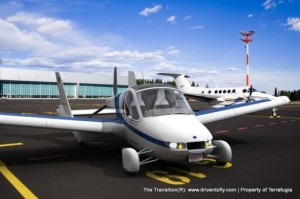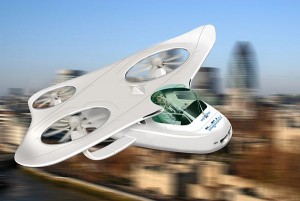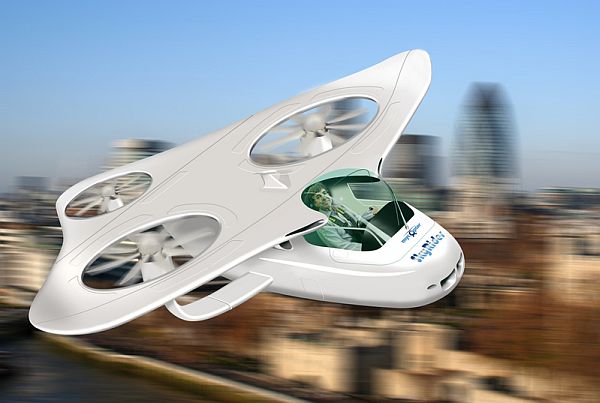by Tim Hornyak
Talk about a way to beat traffic. Actually, you won’t be able to take off out of gridlock in Terrafugia’s flying car, but at least you’ll be able to drive it on roads to the nearest airport. The National Highway Traffic Safety Administration (NHTSA) recently granted special exemptions for the Transition “roadable aircraft.”
The exemptions clear the way for shipping to begin from Terrafugia’s Massachusetts plant following testing. The flying car is slated to enter production this year, with shipping in 2012.
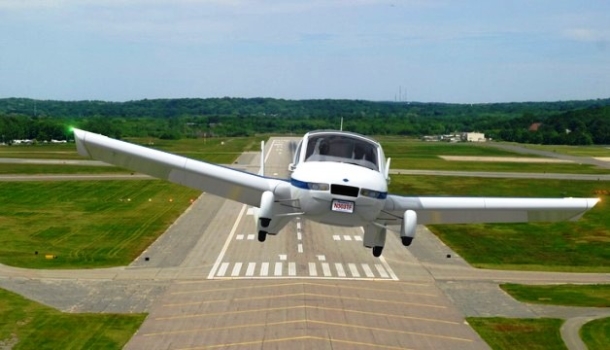
Wanna get your kicks flying over Route 66? (Credit: Terrafugia)
The NHTSA stipulations involve the type of tires and windscreen the Transition will use as a land vehicle. The tires are rated for highway speeds and the windshield will be made of polycarbonate materials instead of automotive safety glass to save weight and prevent shattering in a bird strike.
Terrafugia says the Transition, which notched its maiden flight in 2009, is “the first (light airplane) to incorporate automotive safety features such as a purpose-built energy absorbing crumple zone, a rigid carbon fiber occupant safety cage, and automotive-style driver and passenger airbags.”
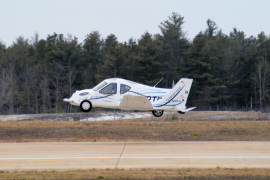
(Credit: Terrafugia)
The wings on the 19-foot-long two-seater take less than a minute to fold. In flying mode, it has a wingspan of 26 feet, and a width of 90 inches in driving mode. It has a range of nearly 500 miles.
It’s not the futuristic “flying car” some of us dream of, but the Transition could be useful for pilots who’d rather drive and fly with the same vehicle. They can also avoid bad weather en route by continuing their journey on land.
Read more: cnet
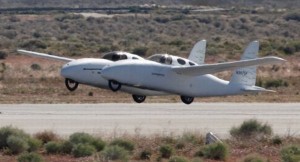
 Follow
Follow